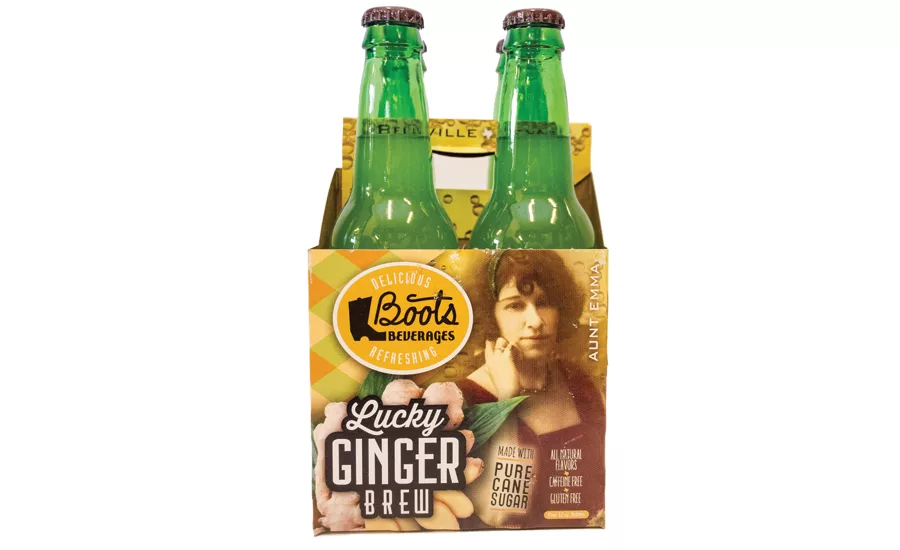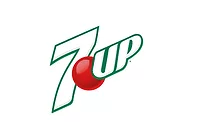2017 Soft Drink Report: What’s next for carbonated soft drinks?
Despite category’s decline, craft soda and ginger ale are bright spots



Carbonated soft drinks (CSDs) have long been the top seller in the U.S. beverage market based on volume. Last month, however, New York-based Beverage Marketing Corporation (BMC) announced that U.S. volume sales of bottled water eclipsed CSDs in 2016, making it the No. 1 consumed packaged beverage. This shift followed more than a decade’s worth of single-digit volume declines for soft drinks.
“The category continues to struggle,” says Gary Hemphill, managing director of research at BMC. “Volume declined for the 12th year in a row in 2016, and we believe more declines are ahead. The category has seen declines mostly in the range of 1 to 2 percent annually over the last decade. While consumers still like and enjoy carbonated soft drinks, they are increasingly opting for alternatives.”
Jordan Rost, vice president of consumer insights for New York-based Nielsen, also notes the decline CSDs have faced, but points out that soda still is consumed by more than three-quarters of U.S. consumers.
“[E]ighty-eight percent of American households bought soda in 2016,” Rost says. “So, soft drinks are still a staple of the vast majority of Americans’ diets.”
Rost highlights that the attrition experienced within the CSD market has been part of a larger macro trend in how consumers are approaching healthy eating and drinking habits.
“The biggest shift we’ve seen over the last decade is a redefinition of what it means to eat and drink healthfully,” Rost says. “At the same time that soda sales have steadily declined 1.1 percent over the past five years, we’ve seen a similar decline in sales of low-sugar, -salt, -calorie and -fat foods. Instead, more consumers are opting for naturally healthful products that tout organic and natural appeals and this is having a dramatic impact on soda growth dynamics.”
In addition to SKU proliferation, BMC’s Hemphill also highlights the impact that health and wellness has had on the category. “Two key macro trends that are driving consumer choices both work negatively against carbonated soft drinks,” he says. “Today’s consumers want variety and healthier refreshment. While variety-seeking consumers are drinking more products across a range of beverage categories, wellness consumers are opting for beverages [that] they believe are better for them.”
Segmenting performance
However, the growing demand for low- to no- sugar and fewer calories did not extend to the diet segment, experts note.
“Low-calorie sodas continued to be one of the poorest performing categories in carbonates as consumers continued to shy away from artificial sweeteners,” says Eric Penicka, research analyst for Chicago-based Euromonitor International. “The off-trade volume sales of low-calorie cola carbonates fell by 5 percent in 2016.”
Nielsen’s Rost suggests that the contraction within diet CSDs is similar to what the milk category has experienced with low- and no-fat milks. “More than 100 percent of the contractions that we’ve seen in the soda category have come from diet soda,” Rost says. “In fact, sales of regular soft drinks grew 0.2 percent in 2016. We see similar dynamics across the total store and in many indulgent categories, as consumers are more accepting that sugars and fats can still be healthful in moderation. For example, while the milk category has seen similar declines to what we see in soft drinks, sales of full-fat milks are on the rise.”
BMC’s Hemphill recognizes the counterintuitive nature of stating that consumers want healthy, lower-calorie, sugar-free CSDs but that the diet segment is declining. To this point, he suggests that consumers likely desire new sweetener solutions for soft drinks.
“We believe consumers want new diet sweetener options,” Hemphill explains. “In an ideal world, a diet sweetener would be natural, in good supply at a reasonable price and taste as much like sugar as possible. Developing such a sweetener has proven very challenging.”
Refreshing options
Although sales of CSDs have been in decline, the carbonates category still accounted for more than $39.4 billion in off-trade dollar sales in 2016, Euromonitor estimates. These sales suggest that the category still remains among the top options when consumers are in need of refreshment.
“Carbonated soft drinks are positioned first and foremost as fun refreshment,” BMC’s Hemphill says. “This remains a massive need state, and one of the key reasons that carbonated soft drinks remain one of the most popular beverage categories in the U.S. today.”
Yet, refreshment is not the only way the CSD category is maintaining its consumer base. The category also has benefited from ginger ale’s association with digestive health.
“Despite overall category declines, sales of ginger ale actually grew 9 percent in 2016,” Nielsen’s Rost says. “More consumers focused on gut health are likely opting for the functional and digestive health benefits of ginger-based soda. While many consumers clearly still want to indulge in soft drinks, they’re turning to ginger ale as a way to still impart some health benefits.”
Additionally, the category could benefit by utilizing more natural ingredients in products, Rost says.
“In spite of overall category decline, sales of natural soft drinks are growing at 16 percent annually,” Rost says. “However, these natural varieties still account for less than 1 percent of total soft drink sales, so natural sodas are a long way away from reaching significant scale. On the other hand, sparkling waters are now purchased by more than one in three American households. I would expect soft drink manufacturers to look outside the CSD category and blur the lines between what we’ve traditionally known as soda.”
BMC’s Hemphill echoes similar sentiments on the use of natural ingredients. “Consumers tend to want more natural ingredients in their products,” he says. “We’re seeing more of this in the craft end of the category and in the overall market to a lesser extent.”
The craft soda market is another bright spot for the CSD category. Yet, like natural sodas, it still remains niche, experts note.
“Craft sodas haven’t had the same impact as craft beer has,” Hemphill explains. “The trend toward premiumization is much more developed in alcohol in general than in refreshment beverages. That said, we believe craft sodas have a role and are likely to carve out a small but viable niche at a premium price.”
Euromonitor’s Penicka also highlights the positive impact that the craft soda segment has had and points to its potential as large corporations increase their involvement in that arena.
“The blossoming craft soda category, one of the few growth areas in carbonates, is receiving a great deal of attention,” he says. “The large players, in particular, have begun to enter this category in force via products such as PepsiCo’s 1893 and Mountain Dew Black Label.”
Purchase, N.Y.-based PepsiCo Inc. extended its commitment to craft soda by expanding its 1893 brand with two new flavors: Citrus Cola and Black Currant Cola.
“With bold, unique flavors and premium ingredients, we are delivering the next generation of colas with 1893,” said Stacy Taffet, senior director of marketing for Pepsi, in a statement at the time of release. “We are thrilled to introduce Citrus and Black Currant to the portfolio, offering a modern take for consumers while honoring the original cola recipes created over a century ago by our founder.”
Atlanta-based The Coca-Cola Co. also is furthering its craft soda commitment. Last year, the company announced that Hansen’s and Blue Sky sodas were being relaunched with new branding and refreshed packaging. The company acquired the brands in 2015 as part of a portfolio exchange with Monster Beverage. The brands now operate under The Coca-Cola Co.’s Venturing & Emerging Brands (VEB) division.
At Natural Products Expo West in 2016, Hansen’s Sodas debuted a throwback logo and glass packaging that paid homage to its 40-year roots in Southern California featuring the tag line, “This is What Original Tastes Like.” Blue Sky Soda also unveiled its new branding and tag line, “Rooted in Real.”
“These brands have incredible potential to thrive and build on their already great histories, and VEB is excited to help steward a new era of innovation, excitement and sustained growth for Hansen’s and Blue Sky,” said Jeremy Faa, senior vice president and general manager of craft beverages for VEB, in a statement. “The crafted and specialty beverage category is a fast-changing, dynamic category. We see great opportunities for growth in this emerging part of the beverage business.”
At this year’s Natural Products Expo West show, Blue Sky announced the launch of the Blue Sky Zero line, which is sweetened with stevia.
In addition to craft sodas, Nielsen’s Rost says that imported sodas are offering consumers more premium CSD options.
“Craft sodas certainly have appealed to some consumers’ desires to enjoy a more premium soda,” Rost says. “In the same vein, we’ve seen strong growth from international colas, whose sales have grown 4 percent over the last year. While still accounting for a small share of U.S. soda sales, soda imports from Italy, Canada and Australia are some of the largest and fastest growing growth opportunities. Interestingly, while Mexico provides the largest share of import soft drink sales and has enjoyed 6-10 percent growth over the last three years, growth in 2016 was flat.”
Rost also thinks CSDs could benefit from the proliferation of eCommerce. “While we’re still in the nascent stages of development, there is and will be a substantial opportunity for driving soft drink sales via eCommerce,” Rost says. “In fact, consumers are far more willing to stock up on soda online as compared to other beverages. So, while eCommerce today accounts for small single-digit percentage of soda sales, the future is bright for buying soda online.”
Going forward, BMC’s Hemphill expects the category will remain a staple beverage in America, but cautions that further declines could be in store.
“We believe CSDs are likely to continue to remain one of the most popular beverage categories in the U.S. with its fun refreshment positioning,” he says. “But we also believe the category is likely to continue to lose volume to niche categories and bottled water. We expect franchise companies to work hard and to make the products healthier but that this process will take time.” BI
Looking for a reprint of this article?
From high-res PDFs to custom plaques, order your copy today!





